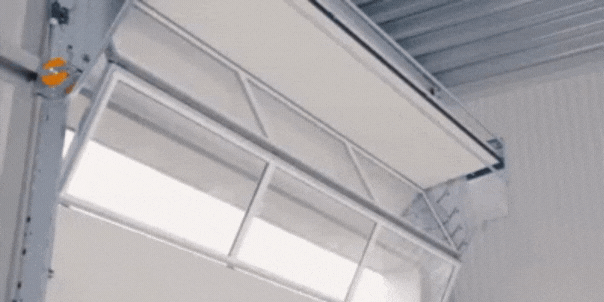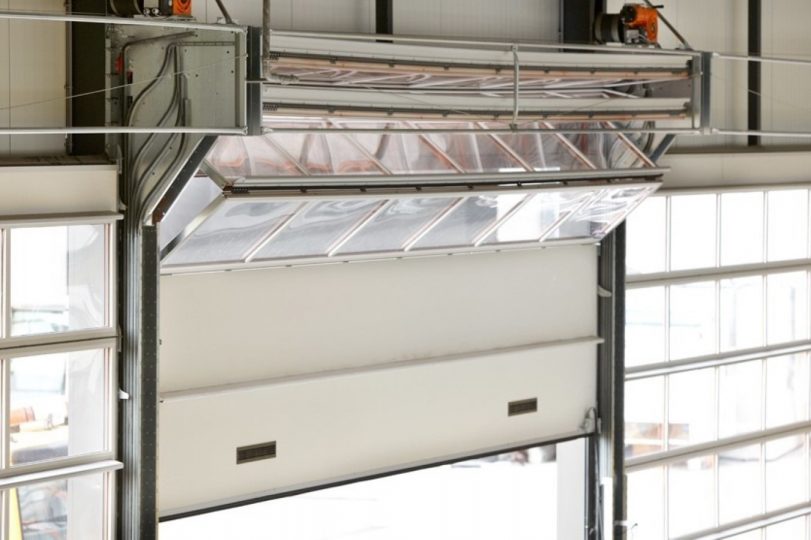Overhead doors are a crucial element in both industrial and commercial buildings, providing efficient access, security, and space optimization. But what are the different types of overhead doors, and how do you know which one suits your needs best? In this article, we’ll explore the main types, including roller doors, sectional doors, bi-fold doors, folding doors, and a few other specialized variants you may encounter. Whether you’re designing a warehouse, showroom, or workshop, understanding your options helps you choose the most practical and cost-effective solution.
Roller doors
Roller doors are among the most widely used overhead door systems in industrial settings. They are composed of narrow horizontal slats—usually made of steel or aluminum—that roll tightly into a drum above the opening when the door is raised. Because the door coils into a compact shape, roller doors are ideal for areas where ceiling space is restricted. Due to their narrow slat construction, roller doors typically offer poor thermal and acoustic insulation compared to other overhead doors, making them less suitable for temperature-controlled environments.
These doors are known for their robust construction, making them resistant to heavy use, weather elements, and unauthorized access. Some models are even available with insulation for improved energy efficiency.
Advantages:
- Extremely space-efficient — no ceiling tracks required
- Suitable for very high door openings
- Can be motorized for ease of operation
Typical Applications:
Loading bays, logistics centers, commercial garages, and storage facilities
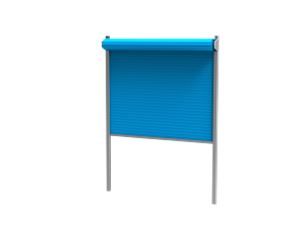
Sectional doors
Sectional overhead doors are constructed from large horizontal panels connected by hinges. As the door opens, the panels move upward along vertical and then horizontal tracks, sliding just beneath the ceiling. This design ensures minimal swing-out space in front of the door, allowing vehicles to park close.
Sectional doors are available in a wide range of finishes, materials, and insulation levels, making them highly adaptable. They offer good sound and thermal insulation, making them popular in environments that require climate control or noise reduction. The overhead tracks used by sectional doors take up valuable ceiling space, which can interfere with lighting, cranes, or other installations inside the building.
Advantages:
- Excellent thermal and acoustic insulation options
- Flexible design with windows, colors, wicket doors, and surface textures
Typical Applications:
Showrooms, car dealerships, fire departments, and warehouses with climate-sensitive goods.
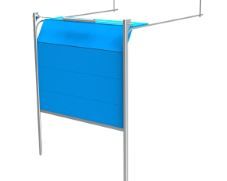
Bi-Fold doors
Bi-fold doors consist of two or more large panels that fold together and lift upward as one synchronized movement. Unlike sectional doors, which slide back under the ceiling, bi-fold doors lift and fold, often resting just above the opening.
They are favored in applications where aesthetics and full-height clearance are essential. Their strong and rigid structure allows for large opening spans with fewer moving parts, which can simplify maintenance.
Advantages:
- Clean, modern appearance with minimal hardware
- Smooth, simultaneous motion of all panels
- Large openings possible with fewer tracks
- Suitable for both industrial and architectural use
Typical Applications:
Aircraft hangars, industrial plants, hangar-style garages, architectural façade designs.
Folding doors (Compact doors)
Folding doors like the Compact door by Rolflex offer a unique combination of convenience, aesthetics, and technical performance. These doors fold upward into a compact stack above the door opening — without any ceiling-mounted tracks — preserving full access to lighting, sprinklers, and overhead installations.
Thanks to their custom design, Compact folding doors can be tailored with windows, full glazing, or specific color coatings to match your building’s design. They operate quietly and smoothly, making them an ideal solution where both looks and functionality matter.
Advantages:
- No ceiling rails — preserves full overhead space
- Minimalist design with architectural appeal
- Available in numerous custom configurations
- Suitable for internal and external use
Typical Applications:
Car showrooms, spray booths, crane tracks, workshops, and renovation projects.
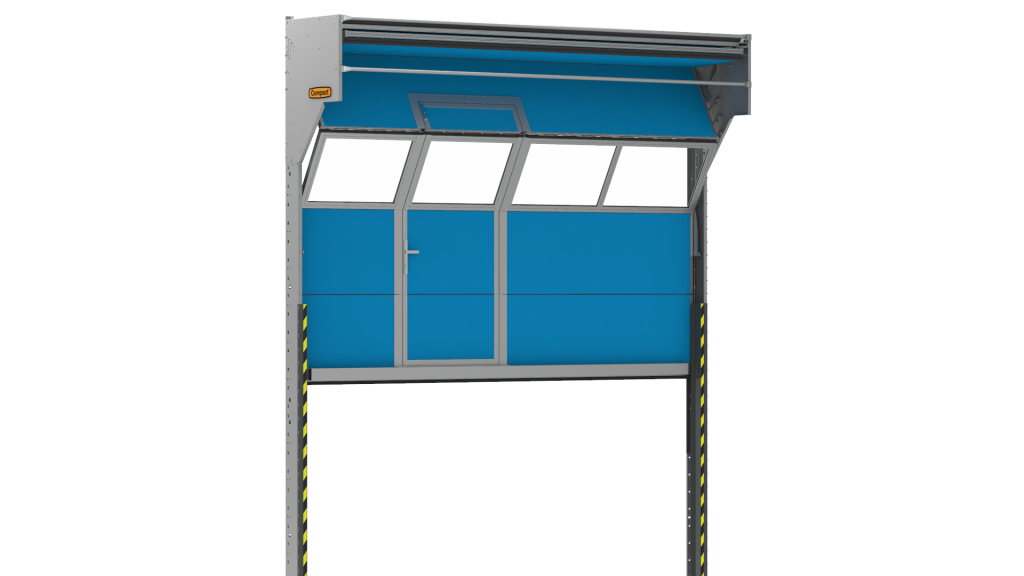
High-Speed overhead doors
Though not always categorized traditionally with overhead doors, high-speed doors fulfill many of the same functions—only at a much faster pace. These doors typically consist of flexible curtain materials or lightweight panel sections that can open and close in seconds, improving traffic flow and reducing energy loss.
Businesses often combine high-speed doors with other overhead doors to maintain thermal efficiency and operational speed in environments that require strict climate separation.
Advantages:
- Extremely fast cycle times reduce air loss
- Optional self-repairing curtain designs
- Improve productivity and cleanliness
- Integrate easily with access control systems
Typical Applications:
Food processing plants, cold storage facilities, distribution centers, and laboratories.
Which overhead door is right for you?
When asking what are the different types of overhead doors, it’s important to not only know the categories but to understand their practical implications. Factors like space constraints, frequency of use, insulation needs, and aesthetic preferences all play a role in choosing the right door.
At Rolflex, we specialize in the Compact industrial door, a smart, space-saving overhead solution that combines design flexibility with technical performance. If you’re looking for an overhead door that does not compromise ceiling space and aesthetics, the Compact door might be the ideal choice.
